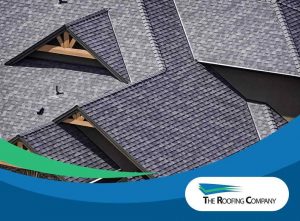Blistering is an asphalt shingle roofing problem that is often mistaken for hail damage, and is one of the most common issues residential roofing contractors are called to fix, especially during the summer. The Roofing Company (CO) takes a look at what causes asphalt shingles to blister and what can be done to prevent it.

What Causes Asphalt Shingles to Blister?
Asphalt shingles are composed of three layers: the paper or fiberglass backing, asphalt, and granules. Sometimes manufacturing errors result in moisture getting trapped between these layers. During hot days this trapped moisture expands, sometimes along with vapors from the heated asphalt layer, resulting in blisters. It should be noted that blisters differ from impact damage, as impact damage has indentations around the damaged area, while those around the blisters are perfectly flat.
Blister formation can be accelerated by poor attic ventilation. Trapped heat in the attic can raise the roof temperature to the point where it can form more blisters. Other areas such as the eaves, as well as siding that’s adjacent to the attic, can also be affected by the trapped heat.
Preventing Blistering Shingles
Choosing quality asphalt shingles during a new roof construction can help prevent blisters, as good shingles may be durable enough to at least avoid blister popping. Once the vapors contract or the moisture evaporates, the blisters should just disappear without causing any real damage to the roof. Blisters can pop from slight impact, or if you accidentally step on them during a roof inspection.
Attic ventilation is a major point you should address. Blistered shingles can be replaced, but if the main cause isn’t solved, you’ll likely have the same problems in the future. Many homes are surprisingly lacking in attic ventilation. There’s a good chance your home might also have damaged insulation, uncomfortably hot indoor spaces, and increased energy bills during summer if it lacks attic ventilation. Ice dam formation and potential structural damage from the trapped heat and moisture may also occur. Your roof should have vents at the ridges, in addition to the ones at the eaves, to allow proper venting. If your roof is up for replacement, make sure proper attic ventilation is part of the new roof.
To learn more about our roof installation services, call The Roofing Company (CO) today at (970) 887-0104. You can also fill out our contact form to schedule an appointment. We serve Aspen, CO, and surrounding areas in Colorado.
